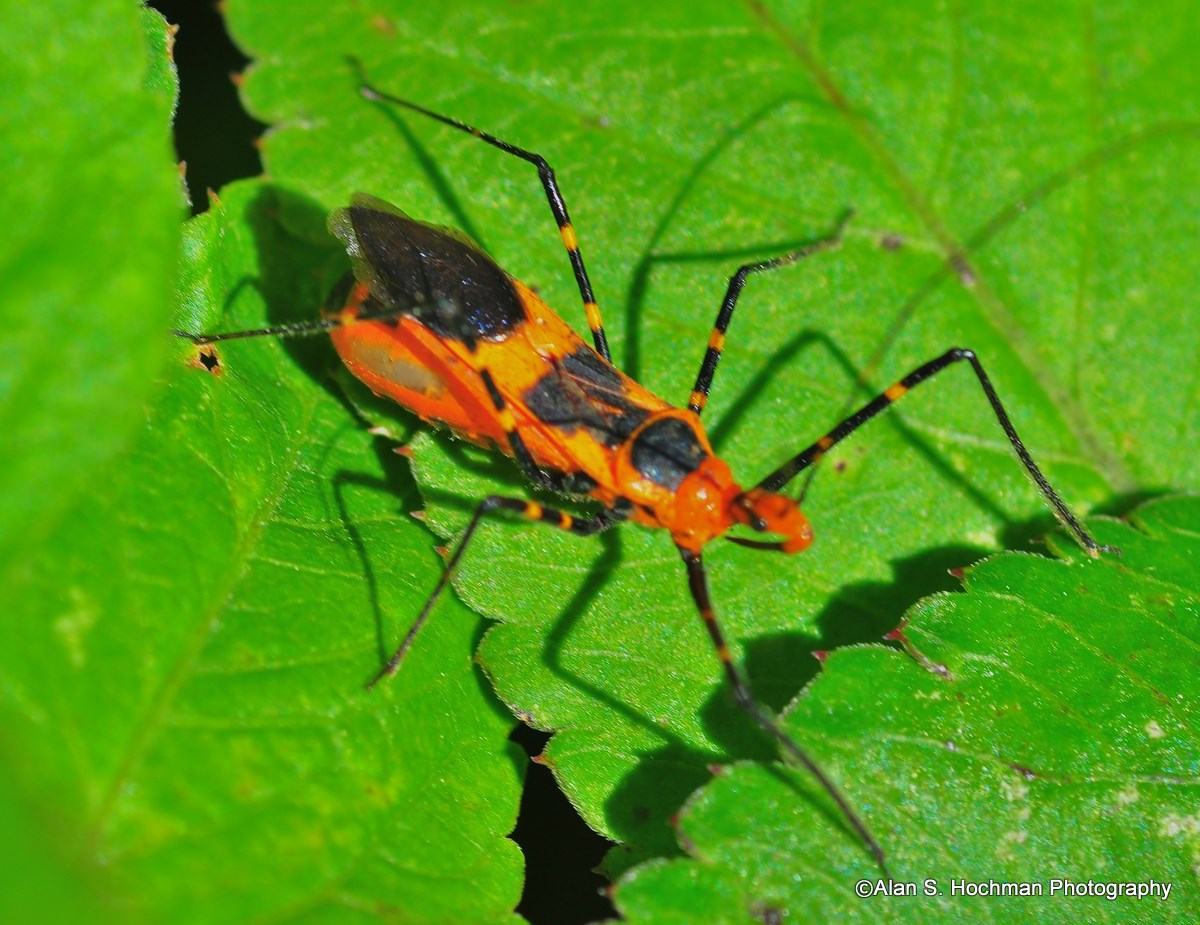WILDLIFE PHOTOGRAPHY – BIG CYPRESS WMA, FL
This photograph is of an Assassin Bug that was taken in the Big Cypress area of the Florida Everglades, using a Nikon D90 with a Nikkor 60mm lens and Tamron 2x Teleconverter.
Assassin Bug Trivia:
Reduviidae (from the contained genus, Reduvius which comes from the Latin reduvia meaning hangnail or remnant) is a large, cosmopolitan family of predatory insects in the suborder Heteroptera. It includes assassin bugs (genera include Melanolestes, Platymeris, Pselliopus, Rasahus, Reduvius, Rhiginia, Sinea, Triatoma, and Zelus), wheel bugs (Arilus cristatus), and thread-legged bugs (the subfamily Emesinae, including the genus Emesaya). There are about 7000 species altogether, making it one of the largest families in the Hemiptera.
Adult insects often range from 4 to 40 mm. They most commonly have an elongated head with a distinct narrowed neck, long legs, and a prominent, segmented tube for feeding (rostrum). Most species are dark in color with hues of brown, black, red, or orange. The most distinctive feature of the family is that the tip of the rostrum fits into a groove in the prosternum, where it is rasped against ridges there (a stridulitrum) to produce sound, a tactic often used to intimidate predators. If harassment continues, they can use their rostrum to deliver a painful bite which in some species can be medically significant.
They use the long rostrum to inject a lethal saliva that liquefies the insides of the prey, which are then sucked out. The legs of some of these bugs are covered in tiny hairs that serve to make them sticky to hold onto their prey while they feed. The saliva is commonly effective at killing substantially larger prey than the bug itself. As nymphs, some species will cover and camouflage themselves with debris, or the remains of dead prey insects. Some species have been known to feed on cockroaches or bedbugs (in the case of the masked hunter) and are regarded in many locations as beneficial. Some people breed them as pets and for insect control.

COOL PHOTO
Cool wildlife photo
Cool wildlife photo
Great work Alan.
love the colors!
Me too! But these bugz still creep me out!!
Assassin bugs are important also as vectors of disease. Certain species are responsible for transmitting Chagas’ Disease, which is the most prevalent parasitic disease in the Americas.
I spend a lot of time in the Florida Everglades doing photography. This was the first time I encountered this insect… And hopefully, the last! Thank you for the info
Unbelievable photos
Definitely impressed with your work.
Beautiful
Nice – you know they look almost identical to those native to our area here in Tropical North Au, made the mistake of handling one once – lol … not pleasant.
Great post – cheers.
Quality posts is the crucial to interest the visitors to go to see the website, that’s what this web page is providing.
Thank you kindly! 🙂